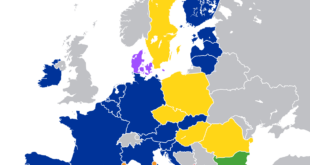- Recently, Pakistan signed a new agreement with China to begin the second phase of the USD 60 billion China-Pakistan Economic Corridor (CPEC).
- Earlier, Pakistan had discussed Taliban-led Afghanistan joining the multibillion-dollar China-Pakistan Economic Corridor (CPEC) infrastructure project.
- The second phase primarily revolves around Special Economic Zones (SEZs) development and industrialisation.
- CPEC is a 3,000-km long route of infrastructure projects connecting China’s northwest Xinjiang Uygur Autonomous Region and the Gwadar Port in the western province of Balochistan in Pakistan.
- It is a bilateral project between Pakistan and China, intended to promote connectivity across Pakistan with a network of highways, railways, and pipelines accompanied by energy, industrial, and other infrastructure development projects.
- It will pave the way for China to access the Middle East and Africa from Gwadar Port, enabling China to access the Indian Ocean and in return China will support development projects in Pakistan to overcome the latter’s energy crises and stabilising its faltering economy.
- CPEC is a part of the Belt and Road Initiative. The BRI, launched in 2013, aims to link Southeast Asia, Central Asia, the Gulf region, Africa and Europe with a network of land and sea routes.
- India has been severely critical of the CPEC, as it passes through Pakistan-occupied Kashmir, which is a disputed territory between India and Pakistan.
- India has also protested to China over the CPEC as it is being laid through the Pakistan-occupied Kashmir (PoK).
- India is a member of the Quad (India, the US, Australia and Japan) which can provide realistic alternatives for countries looking for infrastructure and be an alternative to China. The member countries of the Quad have come up with some alternatives.
- For Example: Blue Dot Network(BDN) and Build Back Better World (B3W) initiative’.
Way Forward
- India’s future strategy thrust on CPEC must be based on a careful reassessment of the potential benefits as well as disadvantages from the BRI project.
- India should speed up work on development of its own strategic projects like, Bangladesh, China, India and Myanmar Economic Corridor (BCIM) and Chabahar Port.
- The Asia-Africa Growth Corridor is an India-Japan economic cooperation agreement, it can provide India great strategic benefits and counter China.
SOURCE: THE HINDU,THE ECONOMIC TIMES,MINT
 Chinmaya IAS Academy – Current Affairs Chinmaya IAS Academy – Current Affairs
Chinmaya IAS Academy – Current Affairs Chinmaya IAS Academy – Current Affairs



